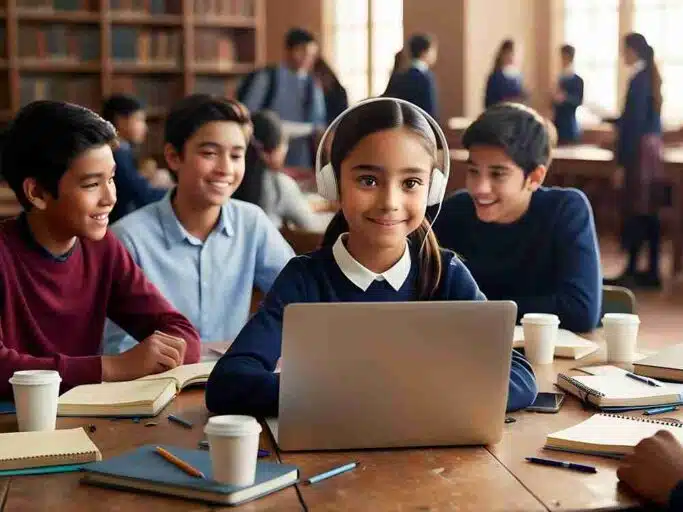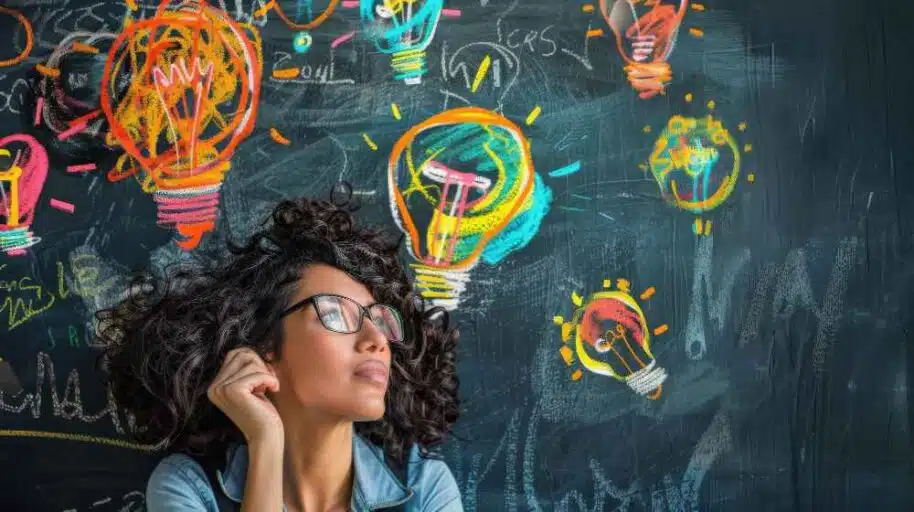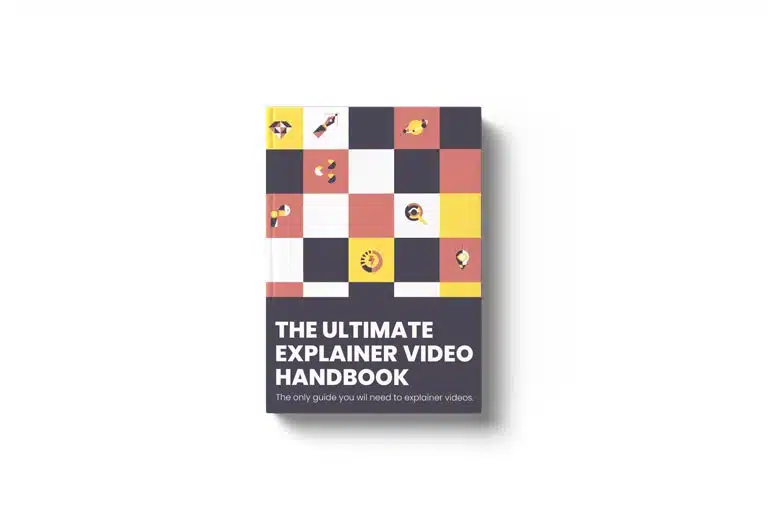Last Updated on September 18, 2024
Article Contents
The Power of Animated Videos in Education
The use of animation in education has transformed traditional teaching methods, creating engaging and dynamic learning experiences. Animated educational videos are more than just entertaining visuals—they are powerful tools that simplify complex ideas, enhance retention, and make learning more interactive. This guide explores the many ways animation can boost both learning and student engagement.
Enhancing Knowledge Retention and Skill Development
One of the biggest advantages of animated Videos in education is its ability to enhance knowledge retention. Research shows that visuals, combined with audio, help students absorb and remember information more effectively than text-based learning alone. Animated videos offer a multisensory experience that connects concepts visually and aurally, leading to better understanding and recall.

For skill development, animation can demonstrate processes and techniques in a clear, step-by-step manner. Whether it’s a science experiment or a complex math problem, animated videos break down tasks into manageable chunks, making it easier for students to follow along and apply the knowledge.
Boosting Student Engagement and Participation

Keeping students engaged in the classroom can be a challenge, especially in today’s fast-paced, technology-driven world. Animated videos capture students’ attention through vivid visuals and creative storytelling. This increased engagement often leads to more active participation, as students become more invested in the material.
By using animation to introduce new topics or explain difficult concepts, educators can motivate students to ask questions, participate in discussions, and explore the subject matter further. Animation turns passive learners into active participants, sparking curiosity and fostering a deeper connection with the material.
Fostering Experience-Based Learning
Animated Videos in education allows educators to create virtual environments where students can experience scenarios that would otherwise be impossible in a traditional classroom setting. For example, animated simulations in biology can let students explore the human body or dive into molecular structures, providing hands-on learning without physical limitations. This form of experience-based learning makes lessons more immersive and impactful.
By simulating real-world situations, animated videos also help students develop critical thinking and problem-solving skills, as they engage with the content in a more interactive and meaningful way.
Ignite Imagination and Creativity
Animation has the unique ability to spark imagination and creativity in students. Through animated storytelling, educators can present abstract concepts in ways that are visually compelling and easy to grasp. This not only helps students understand the material but also encourages them to think creatively and explore their own ideas.

By showing how complex problems can be visualized and solved through animation, students are inspired to approach their own work with creativity and out-of-the-box thinking.
Accessibility and Affordability in Education
One of the most significant advantages of animation in education is its accessibility. Animated videos can be shared across various platforms, from YouTube to e-learning portals, making them accessible to students anywhere, anytime. This is especially valuable for distance learners or students in under-resourced areas, where access to quality educational materials might be limited.
Additionally, creating animated videos is more affordable than ever before, thanks to a variety of animation tools and software available today. Schools and educators can produce high-quality educational content without breaking the budget, providing a cost-effective way to enhance learning.
Accelerating the Learning Process
Animations are particularly effective in speeding up the learning process. Instead of reading long passages of text, students can watch animated videos that quickly explain key concepts. By providing concise, visual explanations, animation helps students grasp ideas faster, allowing them to move through the curriculum more efficiently.
This accelerated learning is especially useful in subjects like science, mathematics, and technology, where complex theories and processes can be explained more easily through animated demonstrations.
Catering to Different Learning Styles
Students learn in different ways—some are visual learners, others are auditory learners, and some prefer hands-on experiences. Animated videos cater to multiple learning styles by combining visual elements with narration and interactive components. This inclusive approach ensures that every student, regardless of their preferred learning style, can benefit from the material.
By offering a variety of ways to absorb information, animated videos in education helps reach a broader audience and enhances the learning experience for all students.
Creating Immersive Learning Environments
Animated videos can create immersive learning environments that transport students into new worlds. For example, history lessons can become vivid reenactments of ancient civilizations, while geography lessons can turn into virtual tours of global landmarks. These immersive experiences make learning more exciting and help students develop a deeper understanding of the subject matter.
With animation, educators can build entire worlds that make learning an adventure, keeping students engaged and eager to explore more.
Simplifying Complex Concepts

One of the primary reasons educators turn to animation is its ability to simplify complex concepts. Whether it’s explaining how the human circulatory system works or breaking down the laws of physics, animation can make even the most challenging topics accessible. By using visuals to illustrate processes or ideas, animation breaks down difficult material into smaller, more digestible parts.
This clarity is especially beneficial in subjects like science, technology, engineering, and mathematics (STEM), where students often struggle with abstract concepts. Animation helps demystify these subjects and presents them in a way that’s easier to comprehend.
Increasing Information Retention Rates
Studies show that students retain more information when they are actively engaged in the learning process. By combining visuals, text, and sound, animated videos stimulate multiple senses, making it easier for students to retain and recall the information later. This multisensory learning experience reinforces key points, helping students to remember more than they would with traditional teaching methods alone.
Animated videos also make it easier to review content. Students can replay lessons, pause to take notes, or revisit difficult sections, further enhancing retention.
Promoting Self-Paced Learning
One of the most powerful benefits of animated videos in education is that they allow for self-paced learning. Students can watch the videos at their own speed, pausing and rewinding as needed. This flexibility is especially helpful for students who may need extra time to fully understand certain concepts. At the same time, advanced learners can move through the material more quickly, allowing them to stay challenged and engaged.
By promoting self-paced learning, animation helps students take control of their education and learn in a way that works best for them.
Enhancing Visual and Auditory Learning
Animated videos blend both visual and auditory elements, making them an ideal tool for students who learn best through these methods. For visual learners, the vibrant imagery and movement help reinforce the material. For auditory learners, the accompanying narration or soundtrack enhances comprehension by providing context and explanation.
The combination of these two learning modalities in one format ensures that the material is presented in a well-rounded way, enhancing the overall learning experience.
Incorporating Interactive Elements
Many educational animations also incorporate interactive elements, such as quizzes, puzzles, or clickable sections, which help students stay engaged and test their understanding of the material. These interactive features make learning more dynamic, encouraging students to actively participate rather than passively consume information.
By incorporating these elements, educators can create a more personalized learning experience that adapts to the needs of each student.
Choosing the Right Animation Style for Educational Content
When creating animated educational videos, choosing the right style of animation is crucial. The animation style should align with the subject matter, the age group of the students, and the overall goals of the lesson. For example, 2D animation might work well for elementary school students, while 3D animation or motion graphics may be better suited for older students or more complex subjects.
By selecting the appropriate animation style, educators can ensure that the content is both engaging and effective for their target audience.
Future Trends in Educational Animation
The future of animation and education is bright, with emerging technologies and trends shaping the way students learn. Virtual reality (VR) and augmented reality (AR) are starting to play a role in education, allowing students to interact with animated worlds in real-time. AI-driven animations are also on the rise, offering personalized learning experiences based on each student’s progress and needs.
As technology continues to evolve, so will the ways in which animation can be used to create more engaging and immersive educational experiences.
Conclusion
The application of animation in education has revolutionized how students learn, offering a flexible, engaging, and effective way to enhance knowledge retention, simplify complex concepts, and cater to different learning styles. Whether through interactive elements, immersive simulations, or simplified explanations, animated videos have the power to transform traditional teaching methods and create a more inclusive, impactful learning experience.
As we look to the future, the integration of animation into education will continue to grow, opening up even more opportunities for students and educators alike. Embracing animation in the classroom can significantly boost student engagement, making learning not only more enjoyable but also more effective.

